Helena P. Schrader's Blog, page 45
August 28, 2016
Chivarly and Balian d'Ibelin: Honor
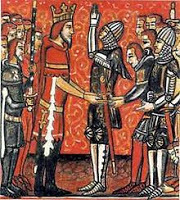
The code of chivalry required that knights be honorable or conduct themselves in an honorable manner. The concept is vague and rooted in societal norms that change over time. What was honorable in the 12th century might not be considered so today and vice-versa. Essentially, it boils down to "doing the right thing" -- i.e. the morally correct behavior even if that is at odds with one's self-interest. At a minimum, however, honorable behavior entailed being honest and trustworthy.
The best evidence that Balian d’Ibelin was viewed by his contemporaries as a man of honor comes from no one less than Saladin.
Having fought his way out of the debacle on the Horns of Hattin, Balian found himself in the comparative safety of Tyre, but his wife and children were in Jerusalem. The Holy City was by this time denuded of defenders, but flooded by refugees. Furthermore, Salah ad-Din had vowed to retake Jerusalem for Islam, and a siege was immanent. In these circumstances, Balian requested a safe-conduct from Saladin to fetch his wife and children out of the endangered city and bring them to the comparative safety of Tyre. The Sultan granted the safe conduct on the condition that the Baron of Ibelin go unarmed and stay only one night; Ibelin took an oath to do exactly this.
On arrival in Jerusalem, however, the tens of thousands of Christians trapped in Jerusalem (reportedly between sixty and a hundred thousand) desperately pleaded with Ibelin to stay and take over command of the defense. The Patriarch explicitly told Balian that it would be more honorable to break his oath to Saladin than to keep it -- a clear indication that "honor" had more to do with doing what was "right" (by the standards of the day) than merely keeping one's word.
But what was the honorable thing for an Christian lord to do in such a situation? Keep his word and abandon tens of thousands of Christians to a hopeless siege that could only end in the slaughter or enslavement of them all? Or break his oath (his word of honor) and try to provide the disorganized refugees with military organization, leadership and expertise?
Ibelin saw his duty in defending the helpless -- despite the fact that this entailed condemning his own wife and family to remaining in the threatened city rather than taking them to safety. Unlike contemporaries like Guy de Lusignan and Reynald de Chatillon, however, Ibelin did not considers oaths to the Saracens meaningless. Instead, he wrote to Saladin, explained the situation, and effectively requested that Saladin absolve him of his oath.
The fact that Saladin not only did so, but also sent some of his own body-guard to escort Balian’s wife and children out of Jerusalem suggests that Saladin did not view Balian d’Ibelin’s action as dishonorable or as a betrayal. Furthermore, Saladin latter negotiated with Richard of England through Ibelin, again suggesting faith in his trustworthiness. Indeed, the tone of contemporary Arab chronicles in referring to Balian d'Ibelin (Ibn Barzan) testify to the degree to which Ibelin was held in high regard even by his enemies -- not because he was sympathetic to them but simply because he was "a man of honor."
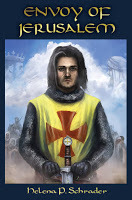
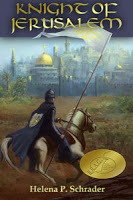
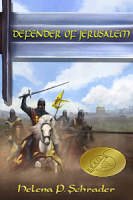
Buy now! Buy now! Buy now!
Published on August 28, 2016 05:00
August 21, 2016
Chivalry and Balian d'Ibelin: Nobility
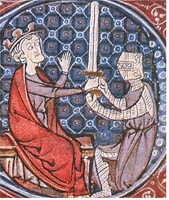
While the characteristics of chivalry could vary somewhat depending on source, a consistent component was "nobility." Certainly in the later Middle Ages, it was increasingly difficult for a man of low station to achieve the status of a knight. Yet knighthood was never confined exclusively to those of noble birth, and being of noble birth was always only part of what medieval writers meant when saying a knight ought to be noble. In the 12 – 15th century it was most common for knighthood to be conferred for deeds of valor on the battlefield or service to the king, and in Balian's age, where knighthood was still a comparatively new phenomenon and chivalry only starting to become the dominant ethic, a man could be raised up by any other knight. In short, the virtue of nobility (as opposed to the noble class) was something more ephemeral and ill-defined. It had to do with living by a code of honor.
Did Balian d’Ibelin do that?
He certainly was not a Reynald de Chatillon, who broke treaties, or a Guy de Lusignan, who usurped a crown. His word was trusted or he would not have been able to act as an intermediary/emissary between warring factions, such as Raymond de Tripoli and Guy de Lusignan, or as an ambassador for both Conrad de Montferrat and Richard of England. From this we can infer that he commanded the respect of his contemporaries, including such men as Salah ad-Din and Richard the Lionhearted.
But perhaps the greatest evidence that he was considered “noble” by his contemporaries (and they are the only ones who can truly judge) is the fact that his reputation was so great that it conferred status on his sons and grandsons despite the fact that he was the holder of only a tiny -- indeed almost insignificant -- fief. There were many barons with greater wealth and more exalted titles, yet both Balian's sons served as regents, his grandson was made Count of Jaffa and Ascalon (traditionally the title of the heir to the throne) and historians have described his descendants as "semi-royal."
These honors were in part a function of family ties to the ruling houses of Jerusalem and Cyprus (through a step-daughter, Isabella, to the throne of Jerusalem and through a niece, Eschiva, to the throne of Cyprus). Yet it is noticeable that neither of these ties was so compelling that they need to have secured influence for generations. That the Ibelin family held an exceptional and exalted status among the theoretically equal barons of the Kingdoms of Jerusalem and Cyprus was, I believe, a reflection of the legacy of "nobility" left by the founder of the dynasty: Balian d'Ibelin.



Buy now! Buy now! Buy now!
Published on August 21, 2016 06:00
August 14, 2016
Balian d'Ibelin and the Age of Chivalry

Balian d’Ibelin was a historical figure and my biography is based on the known facts about his life, but he is also the hero of my novels and as such he is intended to be a positive and attractive character. That, however, does not mean transforming him into a modern man with contemporary values and politically correct opinions. On the contrary, my goal is to portray him as realistically as possible and that means making him a positive figure in the context of his age.
The end of the 12th century was the dawning of the age of chivalry and Balian was a contemporary and companion of Richard the Lionheart, who was seen by many of his followers and by later eulogists as the epitome of chivalry. Even in Ridley Scott’s film, “The Kingdom of Heaven,” Balian d’Ibelin is portrayed as a young man striving to be “a perfect knight.”
But what was a perfect knight in the 12th Century?
Scott used the following oath both for Balian's knighting and the mass knighting at Jerusalem:
“Be without fear in the face of your enemies.
Be brave and upright that God may love thee.
Speak the truth always, even if it leads to your death.
Safeguard the helpless and do no wrong – that is your oath.”
But was fearlessness, bravery, honesty and protection of the helpless the essence of chivalry?
Medieval primers and romances stressed a variety of virtues, including: Nobility, Honor, Loyalty, Righteousness (a strong sense of right and wrong), Prowess (courage), Love, Courtesy - particularly to ladies, Cleanliness, Diligence, Perseverance, Piety, Sobriety, Humility, Mercy and Kindness, Generosity, and Compassion for the Unfortunate.
In my next entries, I will explore the extent to which the historical Balian met these high goals – or at least as much as we can judge based on the historical record.



Buy now! Buy now! Buy now!
Published on August 14, 2016 07:00
August 6, 2016
Balian d'Ibelin and the Third Crusade

Welcome to the Rave Reviews Book Club 2016 Book and Blog Party. From Addis Ababa, Ethiopia, Helena P. Schrader is delighted to participate in this event featuring a wide-range of talented authors from all literary genres.
If you leave a comment on this blog entry, you will qualify for a free ebook copy of "Envoy of Jerusalem."
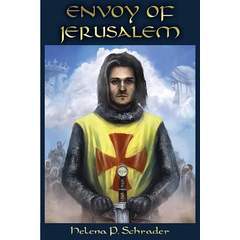
Hollywood made him a blacksmith; Arab chronicles said he was "like a king." He served a leper, but defied Richard the Lionheart.
He fought Saladin to a stand-still, yet retained his respect.. Rather than dally with a princess, he married a dowager queen -- and founded a dynasty. He was a warrior and a diplomat both:
Balian d'Ibelin

Balian d'Ibelin, the hero of Ridley Scott's film "The Kingdom of Heaven" was a historical figure, whose biography was significantly different from the Hollywood character. I have written a three-part biography of Balian based on the known historical facts and extensive research about his society and contemporaries. As with all my novels, particularly my biographical novels, the focus is on the characters, and I am a firm believer that human nature has not changed fundamentally over the millennia. I apply my understanding of human nature gained over the decades to get inside the skin of my historical characters.
The Hollywood Balian was born a bastard, by trade a blacksmith, seducer of a princess, who returns to obscurity in France after the fall of Jerusalem. The historical Balian, in contrast, was the legitimate son of a baron of Jerusalem, born in the Holy Land, the husband of the Dowager Queen and Byzantine princess Maria Comnena, a member of the High Court, and Richard the Lionheart's ambassador to Saladin.
For readers tired of cliches, cartoons and fantasy, my three-part biography of Balian based on the above facts not only brings this important and attractive historical character back to life, it provides refreshing insights into everyday life in the late 12th century crusader states. Rich in complex characters, "Envoy of Jerusalem," provides psychologically sound explanations for the decisions and actions of the men and women who made history in this fateful place and period. It offers humans in place of villains and supermen.
"Envoy of Jerusalem" covers the critical five years between the fall of Jerusalem to the end of the Third Crusade. When the novel opens, Balian has survived the devastating defeat of the Christian army on the Horns of Hattin, and walked away a free man after the surrender of Jerusalem, but he is baron of nothing in a kingdom that no longer exists. Haunted by the tens of thousands of Christians captives now in Saracen slavery, Balian is determined to regain what has been lost. The arrival of a vast crusading army under the soon-to-be-legendary Richard the Lionheart offers hope - but also conflict as natives and crusaders clash and French and English quarrel.
This novel follows the fate not just of kings and barons, but also knights, squires, sailors and tradesmen. It particularly focuses on the horrific impact of a lost war on women - many of whom were condemned to slavery and prostitution in the wake of defeat.
"Envoy of Jerusalem" portrays the clash of cultures between the natives of the Holy Land and the crusaders. It, unlike most novels set in this period, describes the Third Crusade through the eyes of the men and women who called the Holy Land "home," rather than those that came out from the West. Likewise, Richard the Lionheart is shown as a man of many parts, rather than a brute, buffoon or paragon of virtue.
Last but not least, "Envoy of Jerusalem" explores the crisis in faith that the fall of Jerusalem produced among Christians of the period. The characters struggle with understanding the will of God and their individual role and place in the presumed divine plan. Hope I've whet your appetite!
For more information about Balian visit his website at: http://defenderofjerusalem.com -- and be sure to check out the next stop for BOOK & BLOG BLOCK PARTY!
Published on August 06, 2016 22:00
July 31, 2016
Sneak Preview 6: An Excerpt from "Envoy of Jerusalem"
The fate of the Christian captives enduring slavery is an important theme of "Envoy of Jerusalem." In this scene, we catch a glimpse of what is happening to the daughter of Balian's knight Sir Bartholomew in Aleppo.
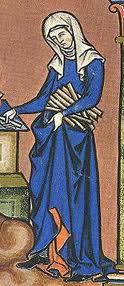
Beatrice prayed God for forgiveness as she brought the filthy linens to the laundry for the umpteenth time. Some part of her Christian soul knew that she ought to feel pity for the 14-year-old struggling to bring her baby into the world, but Fatima had been too heartless and selfish a mistress for Beatrice to feel anything but satisfaction. Imad ad-Din’s others wives were all older women, women he had married in his youth, women who had born him several children each and were in their own way not only weary but wise. Not one of them had been kindto Beatrice, but they had not be crueleither. They recognized that she was a slave because of misfortune beyond her control. For them it was simply the will of Allah that she had to accept no less than they did.
Fatima, on the other hand, came to the household after the death of Imad ad-Din’s second wife. At 13 she was still very young, but she had rapidly recognized that her 60-something husband was smitten with her. He had lavished gifts on her, seemed unable to deny her any wish, and neglected his other wives in his eagerness to savor her charms. The knowledge that she was the master’s favorite rapidly went to her head. She relished showing the other wives that she could get whatever she wanted, while they were rebuked for their “greed” and “covetousness,” if they asked for the smallest thing. She ate in front of them the ice and figs they had been denied, and she laughed and stuck out her tongue when the First Wife tried to rebuke her.
To the slaves she had been even worse, of course. No one ever pleased her, and she threw temper tantrums that included not only throwing things at whoever offended her but also scratching their skin with her excessively long nails or spitting on them. She had taken particular pleasure in mocking Beatrice, calling her “my lady slut” and “my lady whore,” asking how many men it had been the night of her capture. Was it three or four or maybe even a dozen or a score? What had it been like having so many different men inside you, one after the other? Had she been able to climax for them all? Her questions had been so shocking that the First Wife had intervened, chiding Fatima for immodesty and sending Beatrice away to spare her further indignity. But Fatima had pursued the game again when the others were out of hearing.
Beatrice straightened and put her hands to the small of her aching back. “Christ forgive me,” she muttered, “but I hope she dies and her little Muslim brat with her!” With a sigh, she reached for the clean linens, stacked neatly on shelves outside the laundry. She had stacked them there herself after taking them down from the line this morning and folding them exactly as instructed. (When she first came, she had often been slapped or kicked for doing things the Frankish way.) As she took the clean sheets, she was reminded of the effort that went into making them so — something she had not appreciated in her former life. Clean linens had simply been her right as a lady, and laundresses were an almost unseen part of the household. They were generally widows and other poor women, who were allowed to sleep in a dormitory and eat at the bottom of the table in exchange for keeping clean the underclothes, bedclothes and tablecloths of their lord, his family and retainers.
But just this morning she had stood for hours over a cauldron full of boiling water, stirring the clothes as the steam drenched her in sweat and scalded her hands. The lye soap stank and stung, and the smell of it up close almost chocked her. The skin of her hands was permanently red and rough from the exposure to the damp heat and lye steam. She avoided looking at them now because they made her sad. Once, she had loved her long fingered-hands adorned with rings….
She entered the long, dingy corridor between the laundry courtyard and the haram, and was startled when the delivery door suddenly crashed open and people poured inside. They were chattering Arabic much too fast for her to understand it (although she now understood most orders and many ordinary conversations). An elderly woman was removing her veils, now that she was inside, and handing them off to the woman behind her, as she questioned the eunuch leading her toward the haram. She was dressed in very rich robes decorated with strands of gold, Beatrice noted with wistful envy. Most notable, her tone of voice was commanding; she was obviously a First Wife in some important man’s household, Beatrice concluded.
The next instant, she was distracted by the realization that the woman trailing her, who had now removed her veils as well, was blond! More than that, she looked familiar. “Jesus God and all his Saints! Constance!” She called out in utter amazement.
The woman spun about startled, and then let out a cry of recognition so piercing it stopped her mistress and the eunuch in their tracks. They turned back angrily and saw the two Christian slaves fall into each other arms. A moment later they chattering in French, oblivious — and utterly indifferent — to the disapproval of the others.
“Beatrice! Beatrice!” the new-comer gasped, clinging to her. “I never thought I would see you again! Oh, sister! What of your children?”
Beatrice clung to her younger sister as tears streamed down her face. “Don’t ask. Let us be thankful for this moment instead.”
Constance was suddenly crying too. Her heartrending wails came from the depths of her heart as she folded her head upon her sister’s breast and sobbed like a little child. She did not see the look of astonishment on her mistress’ face, much less hear the sharp question from the eunuch demanding an explanation.
“She is my sister,” Beatrice told him, meeting his glare firmly. “You may flog me till I die, if you like, or kick me ‘till my guts spill out my mouth, but you will not stop me from holding my own sister!”
“Leave them!” Constance’s mistress snapped. “We have more important things to do!” She swept on to see to her sister-in-law, leaving the Christian slaves alone in the hall.
My three-part biographical novel is dedicated to bringing Balian, his age and society "back to life."



Buy now! Buy now! Buy now (paperback)
or Kindle!

Beatrice prayed God for forgiveness as she brought the filthy linens to the laundry for the umpteenth time. Some part of her Christian soul knew that she ought to feel pity for the 14-year-old struggling to bring her baby into the world, but Fatima had been too heartless and selfish a mistress for Beatrice to feel anything but satisfaction. Imad ad-Din’s others wives were all older women, women he had married in his youth, women who had born him several children each and were in their own way not only weary but wise. Not one of them had been kindto Beatrice, but they had not be crueleither. They recognized that she was a slave because of misfortune beyond her control. For them it was simply the will of Allah that she had to accept no less than they did.
Fatima, on the other hand, came to the household after the death of Imad ad-Din’s second wife. At 13 she was still very young, but she had rapidly recognized that her 60-something husband was smitten with her. He had lavished gifts on her, seemed unable to deny her any wish, and neglected his other wives in his eagerness to savor her charms. The knowledge that she was the master’s favorite rapidly went to her head. She relished showing the other wives that she could get whatever she wanted, while they were rebuked for their “greed” and “covetousness,” if they asked for the smallest thing. She ate in front of them the ice and figs they had been denied, and she laughed and stuck out her tongue when the First Wife tried to rebuke her.
To the slaves she had been even worse, of course. No one ever pleased her, and she threw temper tantrums that included not only throwing things at whoever offended her but also scratching their skin with her excessively long nails or spitting on them. She had taken particular pleasure in mocking Beatrice, calling her “my lady slut” and “my lady whore,” asking how many men it had been the night of her capture. Was it three or four or maybe even a dozen or a score? What had it been like having so many different men inside you, one after the other? Had she been able to climax for them all? Her questions had been so shocking that the First Wife had intervened, chiding Fatima for immodesty and sending Beatrice away to spare her further indignity. But Fatima had pursued the game again when the others were out of hearing.
Beatrice straightened and put her hands to the small of her aching back. “Christ forgive me,” she muttered, “but I hope she dies and her little Muslim brat with her!” With a sigh, she reached for the clean linens, stacked neatly on shelves outside the laundry. She had stacked them there herself after taking them down from the line this morning and folding them exactly as instructed. (When she first came, she had often been slapped or kicked for doing things the Frankish way.) As she took the clean sheets, she was reminded of the effort that went into making them so — something she had not appreciated in her former life. Clean linens had simply been her right as a lady, and laundresses were an almost unseen part of the household. They were generally widows and other poor women, who were allowed to sleep in a dormitory and eat at the bottom of the table in exchange for keeping clean the underclothes, bedclothes and tablecloths of their lord, his family and retainers.
But just this morning she had stood for hours over a cauldron full of boiling water, stirring the clothes as the steam drenched her in sweat and scalded her hands. The lye soap stank and stung, and the smell of it up close almost chocked her. The skin of her hands was permanently red and rough from the exposure to the damp heat and lye steam. She avoided looking at them now because they made her sad. Once, she had loved her long fingered-hands adorned with rings….
She entered the long, dingy corridor between the laundry courtyard and the haram, and was startled when the delivery door suddenly crashed open and people poured inside. They were chattering Arabic much too fast for her to understand it (although she now understood most orders and many ordinary conversations). An elderly woman was removing her veils, now that she was inside, and handing them off to the woman behind her, as she questioned the eunuch leading her toward the haram. She was dressed in very rich robes decorated with strands of gold, Beatrice noted with wistful envy. Most notable, her tone of voice was commanding; she was obviously a First Wife in some important man’s household, Beatrice concluded.
The next instant, she was distracted by the realization that the woman trailing her, who had now removed her veils as well, was blond! More than that, she looked familiar. “Jesus God and all his Saints! Constance!” She called out in utter amazement.
The woman spun about startled, and then let out a cry of recognition so piercing it stopped her mistress and the eunuch in their tracks. They turned back angrily and saw the two Christian slaves fall into each other arms. A moment later they chattering in French, oblivious — and utterly indifferent — to the disapproval of the others.
“Beatrice! Beatrice!” the new-comer gasped, clinging to her. “I never thought I would see you again! Oh, sister! What of your children?”
Beatrice clung to her younger sister as tears streamed down her face. “Don’t ask. Let us be thankful for this moment instead.”
Constance was suddenly crying too. Her heartrending wails came from the depths of her heart as she folded her head upon her sister’s breast and sobbed like a little child. She did not see the look of astonishment on her mistress’ face, much less hear the sharp question from the eunuch demanding an explanation.
“She is my sister,” Beatrice told him, meeting his glare firmly. “You may flog me till I die, if you like, or kick me ‘till my guts spill out my mouth, but you will not stop me from holding my own sister!”
“Leave them!” Constance’s mistress snapped. “We have more important things to do!” She swept on to see to her sister-in-law, leaving the Christian slaves alone in the hall.
My three-part biographical novel is dedicated to bringing Balian, his age and society "back to life."



Buy now! Buy now! Buy now (paperback)
or Kindle!
Published on July 31, 2016 06:00
July 24, 2016
Interview with Scott Amis
Scott Amis is the author of a forthcoming book set in the late 11th century, To Shine with Honor. This is the first in a series of books, which will follow a French family on the First Crusade. To Shine with Honor sets the scene for the crusade itself, essentially ending with the decision of key characters to take the cross.
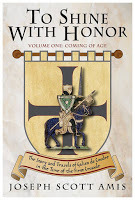 Scott, before we get down to discussing your book, would you mind introducing yourself to my readers? Tell us a little about who you are and how you got interested in writing historical fiction set in Middle Ages.
Scott, before we get down to discussing your book, would you mind introducing yourself to my readers? Tell us a little about who you are and how you got interested in writing historical fiction set in Middle Ages.
Great. So lets turn to your book, "To Shine with Honor." This is the first in a series of novels that will follow your characters through the First Crusade and beyond. What sparked your interest in this period?
A desire to explore the religious/spiritual atmosphere of European Christendom in the Early and High Middle Ages and to understand the backgrounds and motives of the First Crusaders.
2This book essentially ends with the famous appeal for an expedition to rescue the Holy Land issued by Pope Urban II at Clermont in 1195 — well before the Crusade actually gets underway. Why did you choose to start your book so much earlier?
I wanted to create a fictional ‘micro-environment’, with characters and events that would show the lives of ordinary people in late 11th century France, and allow readers to become invested in them prior to their participation in the First Crusade.
3The characters of your book are predominantly fictional. Why did you choose to create characters rather than follow the known historical figures?
Fictionalization of historical persons, to a more-or-lesser degree, requires following a script. I wanted the freedom to create characters who accurately represent the times and places, yet have unique life stories and points of view. The historical persons depicted in "To Shine with Honor" are seen exclusively from the points of view of the fictional characters; in later volumes, as the story progresses to times, places, and events more populated by historical figures, some might well take on lives of their own.
4What aspect of the book did you find most difficult to research?
I found none of the research difficult; it’s more a question of what was neglected due to initial over-enthusiasm. In retrospect, the first manuscript should have been put aside after I had a working story, and much more upfront time devoted to researching details of everyday life.
5What aspect of the book did you find most difficult to render/write?
As a beginning writer and a male, at first, I found it most difficult to ‘get into the skins’ of female characters. Happily, I can now comfortably create characters of both sexes, including variations thereupon.
6I really love the fact that your book doesn’t focus only on the knightly class but also on merchants, monks and architects. Can you say more about the setting for your book, the overall context and why you chose it?
The central event in the series is the First Crusade, and the first requirement a setting close enough to the town of Clermont for the characters to see, hear, and react to Pope Urban’s famous address firsthand. The second was a typical ongoing conflict between two relatively minor feudal lords as a background element as well as a major plot device; thus the fictional County of Saint-Lille and Barony of Mirefleurs, and the fifty-year land feud between their leaders and noblemen.
Monasteries and the Church were all-important elements of medieval life. To have the main character, Galien de Coudre, closely experience them is not only a plot device but also shows the religious environment and the monks, priests, and bishops by whom it was populated.
The architect Joseph of Reims and his work on a fictional Cathedral of Troyes represent elements seldom seen in this genre, but are an essential part of Galien’s journey, and are somewhat ‘fantasy-autobiographical’.
In the late 11th century, cities were seeing a significant increase in population, and growing importance as centers of trade and commerce as well as religious life. Hopefully, Galien de Coudre’s sojourn in Troyes will give readers a memorable glimpse of medieval city life and people of various occupations and social classes.
7Central to the book is a family and much of the power of the book comes from the realistic and complex relationships between members of that family. Can you tell us a little more about the cast of characters?
Henri de Coudre is characterized as a minor nobleman landholder, locally renowned knight of relatively ‘old-fashioned’ values experiencing the difficulties of guiding young adult offspring of widely differing temperaments into suitable occupations and marriages. Eldest son Thierré is first shown as a capable young knight who is yet an immature bully, hard drinker, and womanizer who will grow up via hard lessons ahead. Second son Martin is more in his father’s image: conservative and cautious, courageous, and conspicuously honorable; also possessing his own unique ability to see and seize opportunities and raise himself to wealth and high position. Third son Galien is an educated young man with his feet and mind in two worlds: one, of the pious scholar/artist; the other, of the knight of adventurous spirit and disregard for ‘normality’ - in the latter, he’s very much like Thierré. Daughter Alisende is most similar to Martin, but growing up with three brothers gave her a tough ‘tomboy’ side which balances the more sheltered aspects of her young noblewoman’s life. As she enters adolescence - young adulthood in the times - she becomes a woman determined to make her own way and choices.
8What are the key themes that you set out to address in this series?Faith, spirituality, and the Church; their influence on and importance in all aspects of life in this period of the Middle AgesHonorable and dishonorable characteristics and behavior; their importance in this period of the Middle AgesKnighthood, chivalry, holy war, and the ethic of the Christian warrior: status and development before and during the First Crusade; influence of the First Crusade on their continuing evolutionBonds and characteristics of family and friendship; relationships, love, and marriage; influence of the feudal system on theseSocial stratification and mobility; interaction among classesViolence and that anticipated as facts of everyday life. The effects of violent conflicts between minor noblemen in late 11thcentury France.Wise use and abuse of power; justice and injustice
9What about this particular book? What do you want your readers to come away with?
A vivid image of everyday life and prevalent tensions in France on the eve of the First Crusade, a desire to continue exploring medieval history and the Crusades, and, of course, overwhelming eagerness to read the next volume in the series!
1What would you like to achieve with this series of books?
Thanks for taking the time to answer my questions, Scott. We clearly share many of the same interests and goals, which makes it particularly fun to talk to you. I'm looking forward to the release of "To Shine with Honor" in September. The book is already available for pre-order here:
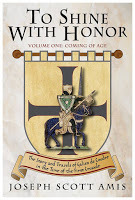
Pre-Order "To Shine With Honor" Now.
 Scott, before we get down to discussing your book, would you mind introducing yourself to my readers? Tell us a little about who you are and how you got interested in writing historical fiction set in Middle Ages.
Scott, before we get down to discussing your book, would you mind introducing yourself to my readers? Tell us a little about who you are and how you got interested in writing historical fiction set in Middle Ages. Helena, I want to first say I'm greatly honored to be your guest. About myself, I'm not an academic historian; my degree is in architecture and I practiced that profession for 30 years before retiring in 2004. Rather than seeing this as the end of my working life, I began to seriously pursue a longstanding interest in the Middle Ages, particularly a borderline-obsessive fascination with the Crusades.
After finding that an advanced degree wasn't practical at the time, I chose to attempt writing a well-researched work exploring all aspects of the First Crusade. As a lifelong reader of historical fiction, this was the course that came most naturally, and, after beginning "To Shine With Honor" in 2008, I had a completed 900-page first manuscript two years later! Of course, this was only the beginning. After six more years of hard work, that involved dividing the first manuscript into three volumes, as well as many tough critiques and major revisions along the way, the first volume of "To Shine With Honor" has become a reality.
Great. So lets turn to your book, "To Shine with Honor." This is the first in a series of novels that will follow your characters through the First Crusade and beyond. What sparked your interest in this period?
A desire to explore the religious/spiritual atmosphere of European Christendom in the Early and High Middle Ages and to understand the backgrounds and motives of the First Crusaders.
2This book essentially ends with the famous appeal for an expedition to rescue the Holy Land issued by Pope Urban II at Clermont in 1195 — well before the Crusade actually gets underway. Why did you choose to start your book so much earlier?
I wanted to create a fictional ‘micro-environment’, with characters and events that would show the lives of ordinary people in late 11th century France, and allow readers to become invested in them prior to their participation in the First Crusade.
3The characters of your book are predominantly fictional. Why did you choose to create characters rather than follow the known historical figures?
Fictionalization of historical persons, to a more-or-lesser degree, requires following a script. I wanted the freedom to create characters who accurately represent the times and places, yet have unique life stories and points of view. The historical persons depicted in "To Shine with Honor" are seen exclusively from the points of view of the fictional characters; in later volumes, as the story progresses to times, places, and events more populated by historical figures, some might well take on lives of their own.
4What aspect of the book did you find most difficult to research?
I found none of the research difficult; it’s more a question of what was neglected due to initial over-enthusiasm. In retrospect, the first manuscript should have been put aside after I had a working story, and much more upfront time devoted to researching details of everyday life.
5What aspect of the book did you find most difficult to render/write?
As a beginning writer and a male, at first, I found it most difficult to ‘get into the skins’ of female characters. Happily, I can now comfortably create characters of both sexes, including variations thereupon.
6I really love the fact that your book doesn’t focus only on the knightly class but also on merchants, monks and architects. Can you say more about the setting for your book, the overall context and why you chose it?
The central event in the series is the First Crusade, and the first requirement a setting close enough to the town of Clermont for the characters to see, hear, and react to Pope Urban’s famous address firsthand. The second was a typical ongoing conflict between two relatively minor feudal lords as a background element as well as a major plot device; thus the fictional County of Saint-Lille and Barony of Mirefleurs, and the fifty-year land feud between their leaders and noblemen.
Monasteries and the Church were all-important elements of medieval life. To have the main character, Galien de Coudre, closely experience them is not only a plot device but also shows the religious environment and the monks, priests, and bishops by whom it was populated.
The architect Joseph of Reims and his work on a fictional Cathedral of Troyes represent elements seldom seen in this genre, but are an essential part of Galien’s journey, and are somewhat ‘fantasy-autobiographical’.
In the late 11th century, cities were seeing a significant increase in population, and growing importance as centers of trade and commerce as well as religious life. Hopefully, Galien de Coudre’s sojourn in Troyes will give readers a memorable glimpse of medieval city life and people of various occupations and social classes.
7Central to the book is a family and much of the power of the book comes from the realistic and complex relationships between members of that family. Can you tell us a little more about the cast of characters?
Henri de Coudre is characterized as a minor nobleman landholder, locally renowned knight of relatively ‘old-fashioned’ values experiencing the difficulties of guiding young adult offspring of widely differing temperaments into suitable occupations and marriages. Eldest son Thierré is first shown as a capable young knight who is yet an immature bully, hard drinker, and womanizer who will grow up via hard lessons ahead. Second son Martin is more in his father’s image: conservative and cautious, courageous, and conspicuously honorable; also possessing his own unique ability to see and seize opportunities and raise himself to wealth and high position. Third son Galien is an educated young man with his feet and mind in two worlds: one, of the pious scholar/artist; the other, of the knight of adventurous spirit and disregard for ‘normality’ - in the latter, he’s very much like Thierré. Daughter Alisende is most similar to Martin, but growing up with three brothers gave her a tough ‘tomboy’ side which balances the more sheltered aspects of her young noblewoman’s life. As she enters adolescence - young adulthood in the times - she becomes a woman determined to make her own way and choices.
8What are the key themes that you set out to address in this series?Faith, spirituality, and the Church; their influence on and importance in all aspects of life in this period of the Middle AgesHonorable and dishonorable characteristics and behavior; their importance in this period of the Middle AgesKnighthood, chivalry, holy war, and the ethic of the Christian warrior: status and development before and during the First Crusade; influence of the First Crusade on their continuing evolutionBonds and characteristics of family and friendship; relationships, love, and marriage; influence of the feudal system on theseSocial stratification and mobility; interaction among classesViolence and that anticipated as facts of everyday life. The effects of violent conflicts between minor noblemen in late 11thcentury France.Wise use and abuse of power; justice and injustice
9What about this particular book? What do you want your readers to come away with?
A vivid image of everyday life and prevalent tensions in France on the eve of the First Crusade, a desire to continue exploring medieval history and the Crusades, and, of course, overwhelming eagerness to read the next volume in the series!
1What would you like to achieve with this series of books?
Accomplishment of the writer’s goal of a superior and memorable reading experience, and the historian’s goal of leaving readers with an accurate and comprehensive image of the times, places, and events explored.
Thanks for taking the time to answer my questions, Scott. We clearly share many of the same interests and goals, which makes it particularly fun to talk to you. I'm looking forward to the release of "To Shine with Honor" in September. The book is already available for pre-order here:

Pre-Order "To Shine With Honor" Now.
Published on July 24, 2016 06:00
July 17, 2016
The Seven Deadly Sins – And What They Say About Medieval Society
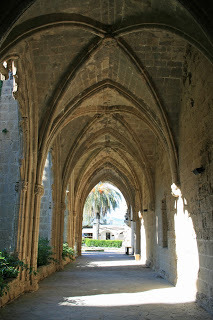
The other day, a friend and I were trying to list the seven deadly sins. We couldn’t, so we went and looked them up. The list surprised me for including “sins” that seem odd in modern society and that got me thinking about how the definition of “deadly sins” reflected the ills of Medieval Society. Essentially, the Church was trying to discourage certain types of behavior thought to be detrimental to a functioning, Christian society by proclaiming them “deadly” sins – sins so egregious that they brought the sinner “spiritual death” – if the sinner did not repent, do penance and receive absolution.
Now some of the deadly sins still strike us as reprehensible behavior. Wrath, for example, is something no one would recommend and most people would agree brings harm – usually not only to the intended target. Likewise lust is a sin whose negative impact is widely recognized to this day. No matter how tolerant modern society may be of sexual freedom for consenting adults, lust remains a dangerous emotional force behind many modern crimes from child abuse and rape to trafficking in persons. Finally, envy is still seen as undesirable.
But greed has more recently been praised as “good” – some people in modern society equating it with ambition and the driving force behind capitalism and free private enterprise. Even more striking, “pride” is something we hold up as a virtue, not a sin. We are proud of our country, proud of our armed forces, proud to be who we are – or at least we strive to be. And who nowadays would put “gluttony” or “sloth” right up there beside lust, wrath and envy?
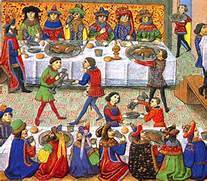
Upon reflection, however, I concluded that the deadly sins tell us a great deal about what behavior Medieval Society particularly feared.
In a society where hunger was never far from the poor and famines occurred regularly enough to scar the psyche of contemporaries, excessive consumption of food was not about getting fat it was about denying others. Because there were always poor who did not have enough to eat just around the corner, someone who indulged in gluttony rather than sharing excess food was clearly violating the most fundamental of Christian principles. Nothing could be more essential to the concept of Christian charity than giving food to the hungry, and a person who not only kept what he/she needed for himself but engaged in excess eating was therefore especially sinful.
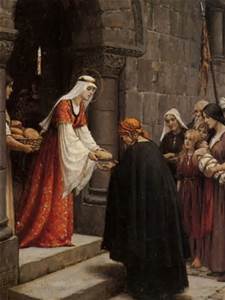 "Charity" by Edmund LeightonSloth is the other side of the same coin. In a society without machines, automation or robots, the production of all food, shelter and clothing depended on manual labor. Labor was the basis of survival, and survival was often endangered. Medieval society could not afford for any member to be idle. Even the rich were not idle! Medieval queens, countesses and ladies no less than their maids spun, wove and did other needlework – when they weren’t running the estates of their husbands. The great magnates of the realm were the equivalent of modern corporate executives, managing vast estates and ensuring both production and distribution of food-stuffs. The gentry provided not just farm management but the services now provided by police, lawyers and court officials. In medieval society every man and woman had their place – and their job. Whether the job was to work the land or to pray for the dead, it was a job that the individual was expected to fulfill diligently and energetically. Sloth was a dangerous threat to a well-functioning society.
"Charity" by Edmund LeightonSloth is the other side of the same coin. In a society without machines, automation or robots, the production of all food, shelter and clothing depended on manual labor. Labor was the basis of survival, and survival was often endangered. Medieval society could not afford for any member to be idle. Even the rich were not idle! Medieval queens, countesses and ladies no less than their maids spun, wove and did other needlework – when they weren’t running the estates of their husbands. The great magnates of the realm were the equivalent of modern corporate executives, managing vast estates and ensuring both production and distribution of food-stuffs. The gentry provided not just farm management but the services now provided by police, lawyers and court officials. In medieval society every man and woman had their place – and their job. Whether the job was to work the land or to pray for the dead, it was a job that the individual was expected to fulfill diligently and energetically. Sloth was a dangerous threat to a well-functioning society. "Sewing" by Edmund LeightonMy most recent work is a biographical novel of Balian d'Ibelin in three parts. Here, as always I strive for an accurate portrayal of medieval society.
"Sewing" by Edmund LeightonMy most recent work is a biographical novel of Balian d'Ibelin in three parts. Here, as always I strive for an accurate portrayal of medieval society.


Buy now! Buy now! Release August 2016
Published on July 17, 2016 03:00
July 10, 2016
Of Portraits and Biographies: The Art of Biographical Fiction


Two great works of biographical fiction.
Writing historical fiction in which real historical figures play a role creates the obligation for careful research. Biographical fiction requires an even higher standard of research, since the entire book must adhere to the known biographical data. Biographical fiction ought to be a biography -- written in a fashion that is easier and more enjoyable to read.
Yet any biographer can tell you that two completely accurate, non-fictional biographies can produce radically different images of the subject. There are always gaps in the historical record, phases of a person’s life that were not meticulously recorded, or events so controversial that no one version of them exists. Unless the subject of a biography also kept diaries of their thoughts and doings every day of his/her life, there is also the challenge of trying to understand motives for recorded actions. And even if the subject of a biography did keep diaries or write letters, there is the issue of how honest or self-serving such documents are. Biographers, like novelists, fill in the gaps, select which of several competing versions of events seems most plausible and speculate about motives and emotions not recorded. Non-fictional biographers do this by openly discussing options and explaining their interpretation of events. Novelists do this by turning their interpretation into a novel.
 A modern biographical novel that provides new insight and a new perspective on a familiar historical figure.
A modern biographical novel that provides new insight and a new perspective on a familiar historical figure. But whereas the best biography is inherently the image that is most like the subject (most comprehensive and accurate in every detail), the same cannot necessarily be said of the best biographical fiction. A very “good” biography might be long, dry and boring, but biographical fiction strives to be not only a record of history (in this case a historical personality) but also a work of art. This means that biographical fiction must be more than just accurate, it has to also be exciting, evocative, moving, and well-written.
Let me give an example from the world of painting. There is only one known (or surviving) painting of Isabella the Catholic, Queen of Castile, which was painted during her life time by an artist who had met her. It is not a very good painting; it is stiff and lifeless, dark and, well, almost amateurish. Yet, there are many portrayals of Isabella by artists, who did not know what she looked at all. These later works may not as accurately depict Isabella’s features, yet they may capture her “spirit” in that they make the viewer “see” aspects of Isabella’s known personality – her piety combined with iron will etc. etc.
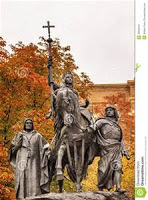
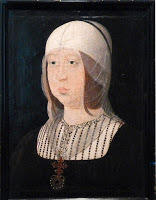

Three interpretations of Isabella of Castille, "La Catolica"
Or consider sacred art. No one knows what Jesus or his mother looked like, but this does not detract from the magnificent works of art portraying them. We judge sacred art not on whether the image correctly shows Jesus as blond or brown-haired, with a long beard or clean shaven, but rather on whether the depictions of Him move and inspire us. Michelangelo’s pieta is not necessarily more accurate in depicting Christ and Maria’s features, yet it stands out above other works of art on the same subject by virtue of its ability to convey the agony of a grieving mother for her murdered son.
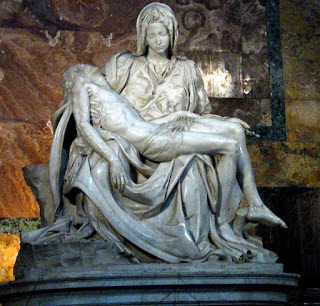 Pieta by Michelangelo in St. Peter's, Vatican
Pieta by Michelangelo in St. Peter's, VaticanThis explains how different biographical novels about the same subject can be very different, yet equally good. Is Schiller or Shaw’s Joan of Arc better? I cannot say off-hand which historians would choose as more accurate, but I do know that both – regardless of which is more accurate – are great works of biographical fiction.
My most recent work is a biographical novel of Balian d'Ibelin in three parts.



Buy now! Buy now! Release Aug. 1, 2016
Published on July 10, 2016 03:05
July 9, 2016
A Lesson on Messenia - An Excerpt from A Peerless Peer
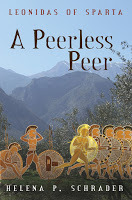
When it became completely dark, they had no choice but to find a relatively sheltered fold in the mountains and settle in for the night. They tethered and fed the horses, and then dug themselves into the leaves to set up a tent. They cooked a meal over a fire they built at the entrance to the tent, then crawled inside and lay down with Beggar between them.
After a moment Leonidas asked, “Is this safe?”
“The fire will keep away the wild beasts,” Mantiklos assured him.
“I was thinking of your countrymen,” Leonidas answered, remembering with unwanted vividness all the childhood stories of Messenians slitting the throats of unsuspecting Spartans. It even occurred to him that Mantiklos, up to now kept in check by the fact that they hadbeen with the Spartan army where Leonidas was surrounded by his comrades, might have been awaiting this opportunity.
“You are well armed and well trained. It is unlikely that the kind of men who live in the wilderness could kill you. And there is Beggar, too.”
The bitch lifted her head at the sound of her name, looked over at Mantiklos, then yawned and flopped her head back down, obviously intent on sleep after the long, hard journey.
“Do you regret your decision [to seek employment with me]?” Leonidas asked abruptly, the cold keeping him from sleep.
“No. But sometimes I wish I were not so alone.”
“Alone?” Leonidas turned on his side and propped himself on one elbow to look at his attendant. They were never alone. They lived in barracks, drilled in units, went to the baths and gymnasia in groups, and sang in chorus. The rarest thing in the life of a young Spartiateand his attendant was solitude.
“The others, the attendants, they’re all Laconian. They look on me with as much suspicion as you do. Not to mention your comrades! Sometimes I get very tired of all that suspicion and hostility.”
“It’s hard to forget two hundred years of warfare.”
“Especially when you declare war on us every year!” Mantiklos snapped back.
“That does not seem to bother the Laconian helots,” Leonidas pointed out. “And we only declare war on you because you are so hostile. We live in peace with the perioikoi, and Tegea, and all the cities of the League, which were our enemies once,” Leonidas pointed out.
“But not with Argos!” Mantiklos reminded him. “You only make peace with people who submit to you. Like hounds, the others have to lie down and offer you their jugular. Then you accept them as long as they run in your pack. But if men are as proud as you, then you cannot abide them, and you fight until one or the other of you is destroyed.”
“Then all Messenia needs do to have peace is to submit—truly submit—to us.”
“But that doesn’t make sense! You admire courage above all else. You should respect us more for not being submissive! You should admire our spirit.”
“But you would never be satisfied with our admiration. You want control of your country back. You want independence for Messenia.”
“Of course we do!”
“But we can’t afford to give it to you. We can’t support the Spartan army—not in today’s world where other armies are so well equipped—without the riches of Messenia.”
“Then you will always live in fear of us.”
They were silent for a few moments, each following his own thoughts. After a while Leonidas asked in a low, earnest voice, “Why did you want to serve me?”
“I wanted to learn what the Spartan army was really like, from the inside. I wanted to understand what made it so good, so I would know how to fight it.”
Leonidas held his breath for a moment, registering that this was more dangerous than the murder he had feared. He should have thought of this earlier. “And now you will stay here and start training rebels?”
Mantiklos laughed. “If only it were that easy!”
“What do you mean?”
The other shrugged, then sat up to readjust the sheepskins he had spread over himself to help keep warm before asking, “Do you think there are many Messenians like me?”
“I have no idea.”
“You will see. Most of my countrymen are craven. They want their freedom only if others are willing to fight and die for it. They want independence only if it does not cost them anything. The bulk of my countrymen are whiners—always complaining and moaning about their fate, but unwilling to take any risks to change it.” With these words, Mantiklos lay down again and turned his back to Leonidas.
The following day they kept to the coastal road following the shore of the Gulf, and at last Mantiklos seemed to lose his inhibitions and began to talk. He started hesitantly, but when he realized that Leonidas was interested, he talked more and more expansively. He told Leonidas about the battles that had taken place in the surrounding countryside during the First and Second Messenian Wars.
Of course, Leonidas had already heard about these battles. They were an essential component of agoge curriculum. But he pretended otherwise, responding rather with wonder and pressing Mantiklos for details, because Mantiklos’ version of what had happened was very different from what was taught in the agoge.
Mantiklos stressed again and again that his forefathers had been heroic freedom fighters, while Leonidas’ forefathers represented brutal and corrupt power. Mantiklos’ ancestors had been crushed by greater numbers, greater wealth, superior weapons—never by the cleverness or courage of their adversaries. Yet when Leonidas looked around him, he saw that Messenia was richer and more prosperous than Laconia. Messenia should have had numbers and wealth on herside. As for weapons, it does not take long to imitate the weapons and tactics of one’s adversaries. They taught that at the agoge, too: if the enemy has something that you find hard to defeat, then learn what it is and how to counter it—fast.
So Leonidas did not discard what he had learned in the agoge. He thought that the agoge version could not be so far from the truth, or he would be Mantiklos’ attendant and Mantiklos the wealthy hoplite—not the other way around. But he realized that the way one was told about the deeds of one’s ancestors had a huge impact on one’s perception of oneself.
Buy Now!
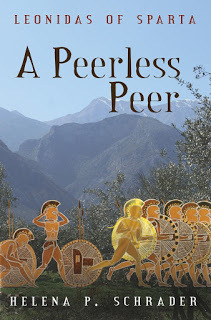
Published on July 09, 2016 04:42
July 3, 2016
The Horns of Hattin -- An Excerpt from "Defender of Jerusalem"
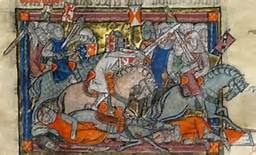
On July 4, 1187, the Sultan of Cairo and Damascus, Salah ad-Din (Saladin) crushed the feudal army of the Kingdom of Jerusalem under the command of King Guy. It was a devastating defeat that led to the complete collapse of the entire kingdom. But it was the decision to leave the springs at Sephorie on the night of July 2 that had decided the battle. Despite the fact that Saladin had captured the important town of Tiberias on the Sea of Galilee, the barons of Jerusalem almost unanimously advised King Guy against marching to the relief of the beleaguered citadel of Tiberias because they recognized that this would be fatal. King Guy appeared to accept their advice, but in the middle of the night he changed his mind and ordered the advance. His change of heart is attributed to a night encounter with the Grand Master of the Knights Templar, Gerard de Ridefort. No one knows now what was said in the king's tent on the early hours of July 3, 1187, but what follows is a fictional hypothesis from Defender of Jerusalem:
Guy was finding it hard to sleep. An army of this size was never entirely quiet. Sentries paced, horses nickered, men moved back and forth to the latrines on the edge of the camp …. Guy was annoyed and wanted to shout at everyone to be quiet. He needed his sleep.
But even if they had all been silent, the camp bed was uncomfortable. The air was still and oppressively hot. It stank too — of smoke from the camp-fires, horse manure, the pork fat that his squires had used to oil his chainmail, garlic from someone’s dinner, and urine from some sentry too lazy to go the latrines. Guy kicked off his sheet and tried to make himself comfortable on his belly, but a mosquito was soon tormenting him. Exasperated Guy sat up, swatting furiously at it.
“Annoying, aren’t they?” A voice said out of the darkness.
“Who’s there?” Guy challenged in alarm, his heart pounding. He was the King! People were not supposed to enter his tent unannounced. He had two knights posted outside to prevent this.
“It’s just me. Rideford,” came the answer.
Guy did not see why the Templar Grand Master should have been allowed into his tent any more than anyone else. He frowned, determined to reprimand his knights at the first opportunity. Right now he had to deal with the Templar Master, who had moved closer to stand directly over his bed. “We need to talk,” Rideford announced.
“Now? In the middle of the night?” Guy challenged him petulantly.
“Yes.”
“Why?”
“Because you cannot let the decision made in Council stand. It is dishonorable, dangerous and discrediting.”
Guy was in no mood for this lecture. They’d argued for hours and no matter how vigorously Oultrejourdain and Rideford had presented their cases, the overwhelming majority of the barons had sided with Tripoli.
Rideford sank down on his heels to be at Guy’s eye level. He kept his voice very low. “Tripoli is a traitor. Everything he says is to Saladin’s advantage.”
Guy rolled his eyes and groaned slightly. “Stop it, Rideford. I know you hate him, but he has paid homage to me and he has brought his troops here. I’m tired of you nagging at me all the time just because youwant your revenge on Tripoli for some girl! It discredits you not me.” “Alright. Don’t believe me, but how can he be so certain no harm will come to his lady, if he didn’t arrange all this with Saladin in advance?”
Guy shook his head to indicate this argument convinced him no more than the rest. “No one thinks the lady herself was in great danger. Even her sons conceded that.”
Rideford shrugged. “Perhaps, but that’s not really what’s at stake here is it?”
“What do you mean?”
“Well, the Lady of Tiberius, the Countess of Tripoli, is one of your vassals and you are honor bound to assist her if she is in need, so it really doesn’t matter what will happen to her personally if you don’t— your inaction reflects poorly on you. It was your inaction four years ago, remember, which made King Baldwin take the regency away.” Rideford had hit a nerve, and he saw Guy stiffen in the darkness. He pressed his advantage.
“You’re the king, aren’t you? Why do you let your barons tell you what to do?”
“Every king has a council,” Guy retorted irritably.
“Yes, and they listen to the council — but then they make their own decisions. They don’t let their barons dictate what is to be done.”
“I’m not letting anyone dictate to me!” Guy retorted defensively, and Rideford smiled in the darkness.
“No?” The Templar Master asked.
“No!” Guy insisted.
“But what did you want to do when you received that messenger from the Countess of Tripoli?” Guy had jumped up, full of chivalrous energy. He’d been on the brink of ordering the army to march at once, through the night, to reach Tiberius. Now he frowned, remembering that, although he said nothing. “Your instinct was to relieve Tiberius, wasn’t it?” Rideford pressed him.
Guy still didn’t answer but his scowl was deeper.
“You are the King,” Rideford repeated. “Don’t make the same mistake twice. Don’t lose everyone’s respect by inaction. Do what your instincts tell you to do. Take this army to Tiberius and crush Saladin!”
“His army is bigger than ours,” Guy complained, still uncertain.
“But we have God on our side. We have the True Cross with us. How can you doubt our victory? Do you not think Christ is intimidated by the hoards of Mohammed?”
Guy caught his breath.
“Lead this army to Tiberius, your grace, and with the Grace of God you will win a great victory! You will forever be remembered as the Savior of Jerusalem! Your name will eclipse that of Godfrey de Boullion and Henry Plantagenet. Why, if you shatter Saladin’s army, what is to stop you from taking Damascus? Or Cairo? Or both?”
“We march at dawn!”
Defender of Jerusalem describes the events leading up to Hattin, the battle itself and the immediate aftermath, including the fall of Jerusalem.
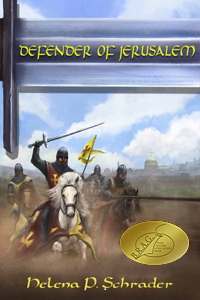 Buy Now!
Buy Now!
Published on July 03, 2016 05:00



